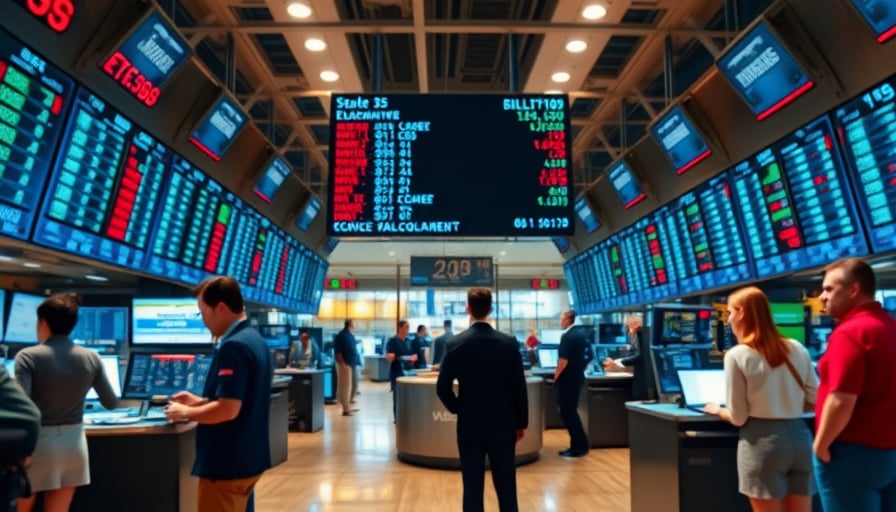Corporate News Analysis
Market Overview
The New Zealand equity market has entered a period of volatility, with major indices showing a muted trajectory across the week. This broader sell‑off has weighed on a range of sectors, from consumer staples to technology. Within this environment, Infratil Ltd has experienced a noticeable decline in its share price, now trading below its 52‑week high. The decline is largely attributable to the macro‑market sentiment rather than a fundamental shift in the company’s underlying business.
Infratil’s Positioning
Diversified Asset Base
Infratil’s portfolio remains diversified across several high‑growth sectors:
- Digital infrastructure (cellular towers, broadband networks)
- Renewable energy (wind, solar, geothermal)
- Healthcare (hospital infrastructure, medical device manufacturing)
- Airport operations (regional and international terminals)
These segments provide a balance of stable cash flows and growth potential. Infratil’s strategic focus on long‑term, low‑operating‑cost assets aligns with investor demand for resilient returns in an uncertain macro environment.
Short‑Term Market Pressure vs. Long‑Term Outlook
While the current price dip reflects a market‑wide pullback, valuation multiples across the infrastructure space remain attractive. Historically, infrastructure assets have shown a lower sensitivity to cyclical downturns, driven by regulated revenue streams and inflation‑linked contracts. Analysts project that, barring a severe economic shock, Infratil’s earnings trajectory will continue to rise, supported by incremental capacity expansions and cost‑management initiatives.
Comparative Performance of Peer Investment Vehicles
NAOS Asset Management
NAOS’s three listed investment companies (LICs) delivered +5.98 % to +12.23 % returns in Q1 FY2025. This performance stems from:
- Improving fundamentals of underlying holdings in technology and consumer sectors.
- Re‑elevation of investor demand for emerging companies, particularly in fintech and green technology.
The outperformance underscores the benefit of a focused, actively‑managed investment approach in a recovery phase.
Kingfish Limited
Kingfish reported a +2.0 % gross return in the September quarter, with 11 of 15 holdings posting gains. However, losses in larger positions—EBOS and Vista—offset broader upside. Kingfish’s strategy of investing in quality growth companies is vindicated, but the recent sell‑offs highlight the inherent concentration risk in larger, more volatile holdings.
Regulatory and Macro‑Economic Context
- Monetary Policy – The Reserve Bank’s continued emphasis on a moderate inflation target keeps borrowing costs relatively stable, supporting infrastructure financing.
- Infrastructure Funding – New Zealand’s commitment to a $50 billion infrastructure pledge (2023‑2026) reinforces demand for asset managers with a robust pipeline.
- Green Transition – Regulatory incentives for renewable projects, including feed‑in tariffs and carbon credits, bolster the attractiveness of Infratil’s green energy segment.
These factors collectively underpin a positive long‑term outlook for infrastructure investment managers.
Competitive Dynamics
- Peer Benchmarking: Infratil’s return on assets (ROA) remains above the sector average, reflecting efficient capital deployment.
- Sector Concentration: While diversified, a notable share of Infratil’s portfolio is in digital infrastructure, which is currently experiencing heightened competition from new entrants and consolidations.
- Strategic Partnerships: Recent joint ventures with telecom operators and energy firms position Infratil favorably to capture emerging market opportunities.
Emerging Opportunities in Financial Services
- Infrastructure‑FinTech Convergence – FinTech platforms are increasingly offering financing solutions tailored to infrastructure projects, reducing capital access barriers.
- ESG‑Focused Investment Products – Asset managers can capitalize on the growing demand for environmentally responsible portfolios, especially within renewable energy holdings.
- Cross‑Border Expansion – Infratil’s experience in international airport operations offers a blueprint for entering Asian and Pacific markets, where regulatory frameworks are progressively opening.
Strategic Implications for Investors
- Long‑Term Value Creation: The current price dip presents an opportunity for value‑oriented investors seeking to acquire shares ahead of a market rebound.
- Risk Mitigation: Diversification across sectors and geographies within Infratil’s portfolio reduces exposure to any single economic shock.
- Portfolio Allocation: Consider allocating a modest weighting to Infratil within a broader infrastructure mandate, balancing it with actively managed LICs like those under NAOS for tactical upside.
Conclusion
Infratil’s recent share price decline is largely a reflection of market-wide headwinds rather than a signal of deteriorating fundamentals. The company’s diversified portfolio, coupled with favorable regulatory and macroeconomic conditions, sustains its long‑term growth trajectory. For institutional investors, the present market environment offers a strategic entry point into a resilient asset class, while the broader landscape of investment vehicles—such as NAOS and Kingfish—highlights the importance of active management and sector diversification in maximizing returns amid volatility.
